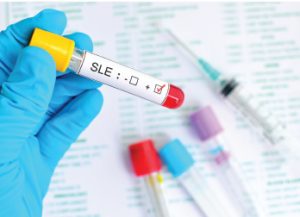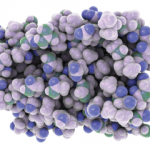
Jarun Ontakrai / SHUTTERSTOCK.COM
SAN DIEGO—What are the predisposing genes that suggest who will develop active systemic lupus erythematosus and who will stay healthy? Decades of research data help rheumatologists clarify this picture, says Argyrios N. Theofilopoulos, MD, professor of immunology and microbiology at Scripps Research Institute in La Jolla, Calif. At his Nov. 5 lecture at the 2017 ACR/ARHP Annual Meeting, Dr. Theofilopoulos shared findings from his 45 years of research into the pathogenesis of lupus supported by the National Institute of Arthritis and Musculoskeletal and Skin Diseases (NIAMS).
“We define predisposing genes as allelic or mutated variances that lead to the gain or loss of function, and we attempt to identify these genes using intercrosses between resistant and susceptible strains of mice, and develop chromosomal maps based on single-nucleotide polymorphisms (SNPs),” said Dr. Theofilopoulos. “Because our approach is moving from phenotype to genotype, it’s unencumbered by preconceived notions, and thus, provides the opportunity to identify novel genetic contributions in this disease.”
Heterogeneous Disease
Lupus is a highly heterogeneous disease, but there are common denominators in its complex processes, said Dr. Theofilopoulos.

Dr. Theofilopoulos
“Because this disease is mediated not only by genetic predisposition but also by environmental contributions, and because it is polygenic, it’s been very difficult to identify the predisposing and effector genes in humans,” so researchers use certain strains of mice that develop a similar form of lupus, he said. Lupus researchers long focused on addressing problems within the adaptive immune system and looked for pathogenic effectors that would trigger the production of pro-inflammatory cytokines.1 “We determined the tolerance processes, defects in T and B cells, and the presence of genes that promoted or even inhibited the disease process. Despite these advances, several questions remained unanswered. What triggers this disease? Why is there such a diversity of autoantibodies? What is the essential process by which inflammatory responses are initiated?”
Around 20 years ago, lupus research shifted to defining the molecular basis and composition of the innate immune system, particularly receptors that facilitate the recognition of nucleic acids inside cells, rather than just receptors on cell surfaces, he said. The endolysosomal nucleic acid-sensing Toll-like receptors (TLRs) 3, 7, 8 and 9 are of particular interest in lupus, as well as cytosolic sensors like the RNA-recognizing RIG-I and MDA-5, and DNA-sensing c-GAS and AIM2. These sensors induce various transcriptional factors and promote the production of pro-


